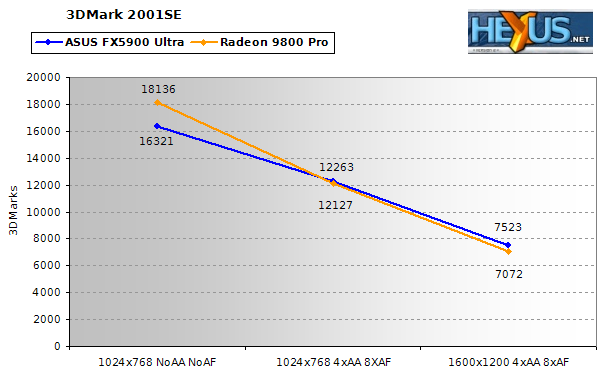3DMark 2001SE
So we know how the new graphs work, what should we be expecting in terms of GeForceFX 5900 Ultra performance compared to 9800 Pro? With the 5900 benchmarked on the 45.23 driver set, a driver that removes or corrects a lot of the invalid optimisations that NVIDIA used to do in their driver for certain benchmarks, we should have a clearer picture than we had before.Let's try out the new graph with 3DMark 2001SE and see what we come up with. Remember that Detonator FX 50 drivers are out soon, altering performance again.

Initially, a very nice lead for the 9800 Pro, close to 2000 marks. But we don't run £250+ graphics cards without the extra image quality enhancing features that they are famous for, so turning on 8 sample anistropic filtering and 4 sample multisample antialiasing gives a more accurate representation of performance, in terms of how you'll use the cards. Now we see the ASUS card claw back the performance deficit and get back on terms with its rival.
We end up with a win for the ASUS due to the increased framebuffer memory. With NVIDIA NV35's using card memory to store everything from in-flight texture data, shader programs and data to antialiasing sample data, the 256MB of card memory helps gain the final win.
While 3DMark 2001SE is only a DirectX 8 class test, in terms of how it uses the hardware (and indeed the API), it's still indicative of the performance of a large range of games being played today. Both boards are good DX8 performers.
On to Quake 3.









